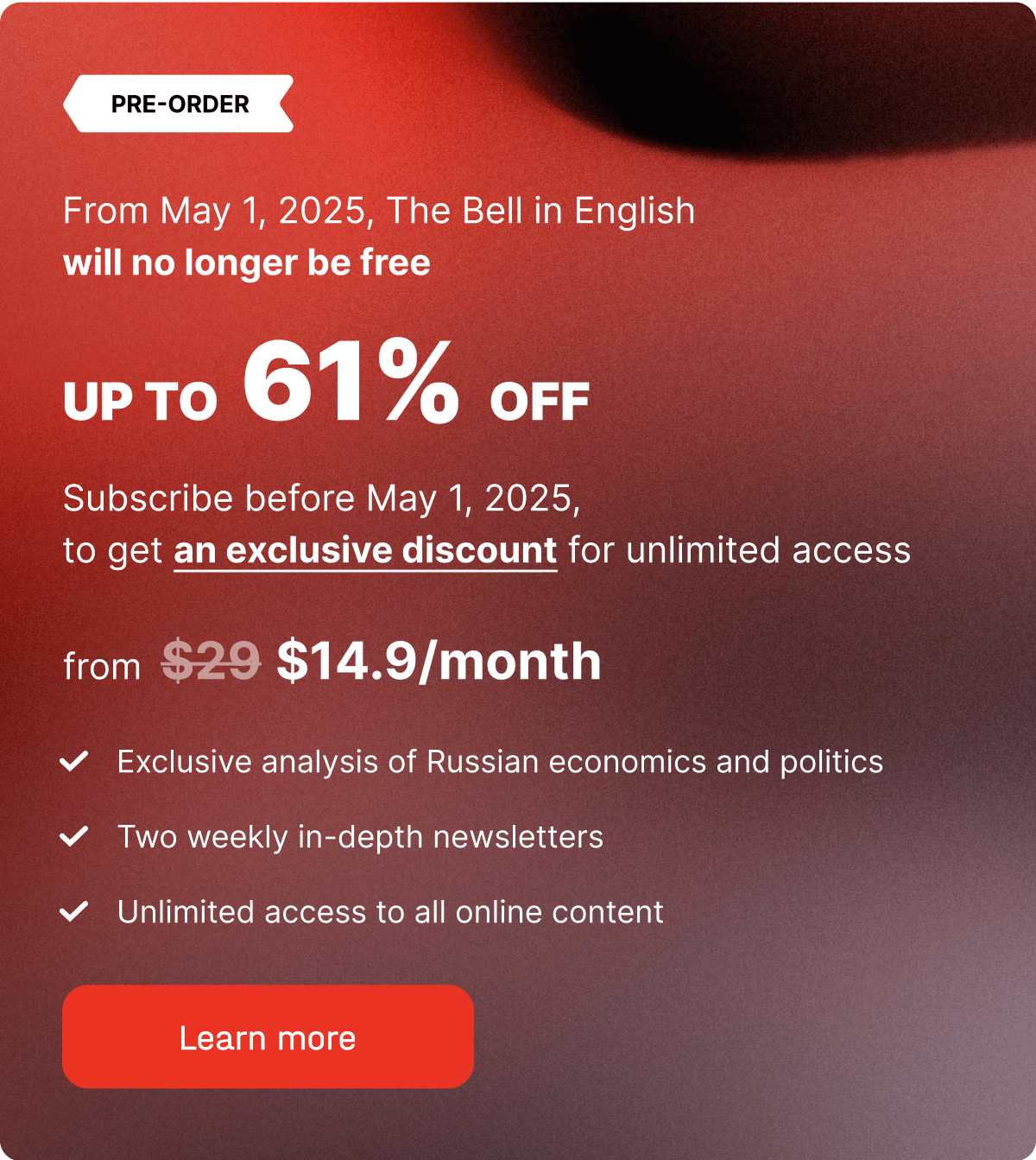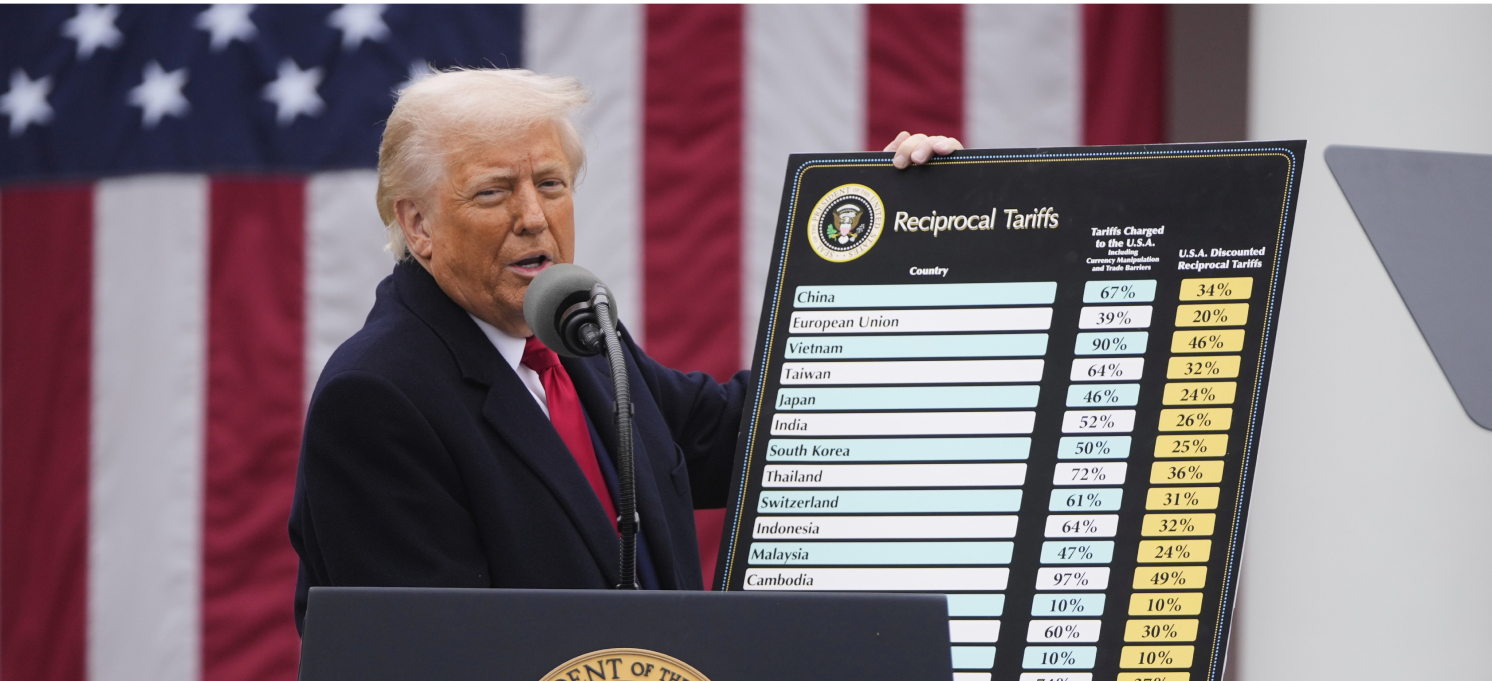
Russia’s uphill struggle boost market capitalization
Hello! Welcome to your weekly guide to the Russian economy – written by Alexander Kolyandr and Alexandra Prokopenko and brought to you by The Bell. This week our top story is a look at the obstacles facing Russia’s drive to get people to invest their savings into the stock market. We also look at why Trump’s threats to impose tariffs on Russian goods are unlikely to mean Kremlin officials lose any sleep.
The problems of attracting private money to the stock market in wartime
Russia is keen to attract more private investors to the stock market. It seems a logical aspiration: the population is saving more, and this money could be put to work as a source of financing for the corporate sector. But there are some issues.
What’s going on?
The Central Bank sent a letter to Russian issuers on Wednesday with recommendations about how to increase the market value of companies. These recommendations are based on a report from the Moscow Exchange that was presented last month and widely discussed this week. The report is full of advice on how to prepare companies for an IPO.
The Russian authorities have long been talking about the need to attract more private funds to the stock exchange. The war in Ukraine and the imposition of Western sanctions have not changed their approach – but sometimes make their efforts seem divorced from reality.
Last month, President Vladimir Putin set the government and the Central Bank a goal of increasing Russia’s market capitalization, ordering that it should reach two-thirds of the country’s GDP by 2030. However, it has a long way to go.
In the first 11 months of last year, the Russian market’s capitalization was 47 trillion rubles (roughly a quarter of GDP). That’s well below what it was in early 2022 before the full-scale invasion of Ukraine – 46% of GDP. Even compared with the first quarter of 2022 – the nadir of the post-invasion financial collapse – it has only rebounded 11% (less than inflation).
The war in Ukraine led to an exodus of foreign investors – who made up a quarter of market capitalization at times when you include the shares of Russian companies traded in the West. Not only would foreign investors in Russia today be at risk of falling foul of Western sanctions, but they could not sell anything because Russia has effectively banned foreigners from “unfriendly” nations from withdrawing funds from the country. A few investors from “friendly” countries (mostly former Soviet nations) have remained, but even they, according to one trader, are “always looking for a way out.”
Deputy Finance Minister Alexei Moiseyev revealed plans to attract more investors last month. Tempted by high returns, he said they would overlook past problems. “Those of us who have long worked on the financial markets know that, in spite of everything, greed conquers all,” Moiseyev said. He suggested that the government might offer “new” investors guarantees. However, this seems to be wishful thinking.
Another critical limitation on the market is an information deficit. “An important condition to develop the capital market and the financial market in general is to encourage trust among its participants,” the Central Bank wrote in its report. But this runs counter to the efforts made by many companies in recent years to classify as much information as possible. Under rules introduced at the start of the war, corporations are no longer required to disclose ownership, governing bodies and boards of directors, major counterparties, regions of operation, production volumes, subsidiaries, balance sheets or even the full name of CEOs. The rules were designed to make it harder for the West to impose damaging sanctions.
What is the government trying to do?
One of the main goals is to try and increase the number of Russian companies going public. A couple of years ago, the government was focused on small, fast-growing companies; now it is targeting large state-owned corporations. In 2024, there were 19 placements – more than in 2023 (12). At the end of last year, leading Russian chemical company Sibur was talking about an IPO, and announced the sale of 2% of its shares to reportedly raise “billions of rubles.” Putin has even proposed a link between state subsidies, and going public. However, this does not solve the issue of a lack of transparency.
To be fair, there are some cases of stock markets growing despite sanctions. In Iran, for example, the market has increased in size threefold over the past four years and, at times, capitalization has exceeded the country’s GDP. For Iranians, stocks are a way to protect savings from inflation. However, in Russia this won’t work – not just because of a lack of confidence in the market, but because of current record high interest rates.
Data suggests that there is a growing number of private stock market investors, but according to the Moscow Exchange, they mostly just invest in debt instruments that have guaranteed income. According to the Central Bank, Russians keep more than half their savings in deposits, and less than a quarter of savings are invested in securities.
The Moscow Exchange and the Central Bank recommendations would make sense in a country with an open economy, no restrictions on capital movements and robust institutions to protect property rights and investors. But Russia is not that sort of country. According to one trader who requested anonymity, the market is “dead, but twitching.”
Investors should also be wary of the Kremlin’s willingness to sacrifice the stock market for its geopolitical goals. There was a revealing incident in 2014 when Western sanctions led to a run on the ruble, and a stock market collapse. At the time, members of one pro-Kremlin youth movement daubed graffiti on a wall in Moscow that read: “some things are more important than the stock exchange.” It’s a moment that investors should remember.
Why the world should care
The Russian government’s desire to translate increased deposits into investments is understandable – money should be put to work. But the war makes it hard to make this a reality. For now, high rates on deposits in reliable banks are far more attractive than investing in shares. This may change if a fall in inflation pushes down interest rates. But any real revival of the market, in line with Putin’s targets, seems doomed to be frustrated by a lack of public information, general mistrust and limited access to global finance.
Will the Kremlin be spooked by Trump’s threat of tariffs?
President Donald Trump threatened Putin on Wednesday with tariffs and sanctions on Russian exports if Moscow does not enter into peace talks over Ukraine. However, with the limited volume of Russian trade, these threats are unlikely to resonate.
- Trump posted that he would impose “high taxes and tariffs on everything that Russia sells to the USA and other participating countries” if Putin does not engage in peace negotiations with Ukraine and come to an agreement.
- However the volume of Russian exports to the United States is so tiny that these restrictions are unlikely to have an impact. In the first 11 months of 2024, Russia sold $2.9 billion worth of goods to the U.S., ten times less than in 2021. Moreover, it’s 50 times less than Russia sells to China.
- What Trump means by “other participating countries” and how he can impose tariffs on Russian exports to third countries is unclear. Even if the U.S. imposes sanctions on Russian exportsn to the third countries, everything would depend on Washington’s willingness to punish Russia’s leading trade partners – India, China, and Turkey. The EU, United Kingdom, Australia, Canada, and other Western countries backing Ukraine have already slashed imports from Russia to record lows.
- The Kremlin made it clear that it is unimpressed with the threat. “We don’t see anything particularly new here,” said Putin’s press secretary Dmitry Peskov. This is a rare occasion when Peskov’s words can be taken at face value.
Why the world should care
It is unlikely that Moscow will be forced to make concessions because of U.S. threats over tariffs and export duties. Much more dangerous for Russia’s finances is a fall in oil prices, which began after Trump this week called on Saudi Arabia to increase production.
Figures of the week
Russia’s budget deficit last year was 3.5 trillion rubles ($37.8 billion) or 1.7% of GDP, according to the Finance Ministry. That’s more than twice the amount anticipated at the start of the year (1.6 trillion rubles or 0.9% GDP). In 2025, the government is planning a deficit of 1.2 trillion rubles (0.5% GDP).
Due to a sharp increase in tanker freight costs following the oil sanctions imposed by the outgoing U.S. administration, the discount on Russian crude out of Far Eastern ports also has increased dramatically. Prior to sanctions, there was a $2 discount on ESPO compared with the Platts Dubai price. On Jan. 21, however, the agency calculated that the discount was $11.50 (close to the record set in 2022).
Between January 14 and January 20, weekly inflation in Russia slowed from 0.67% to 0.25%, according to the Economic Development Ministry. Annual inflation accelerated from 9.86% to 9.92%. Food inflation continues to outstrip price rises on non-food and services.
Further reading
Putin Is Not Yet Desperate. Economic Pain Won’t Turn the Tide in Ukraine
Countering Russia's 'Shadow Fleet'
Why Russia’s Nuclear Forces Are No Longer Being Updated
Energy and Climate Issues During the Trump Administration’s First 100 Days



PAID SUBSCRIPTION LAUNCH
From May 1, 2025, The Bell in English will no longer be free
From May 1, 2025, all The Bell’s newsletters and online content will be behind a paywall. We have taken this decision so that The Bell can remain financially independent, and maintain our high standards of journalism and economic expertise






